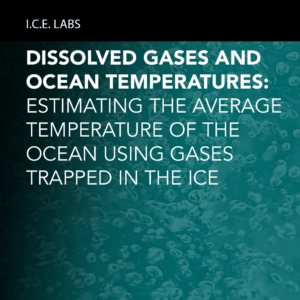Article Abstract
A new ice core drilled at the South Pole provides a 54 000-year paleoenvironmental record including the composition of the past atmosphere. This paper describes the SP19 chronology for the South Pole atmospheric gas record and complements a previous paper (Winski et al., 2019) describing the SP19 ice chronology. The gas chronology is based on a discrete methane (CH4) record with 20- to 190-year resolution. To construct the gas timescale, abrupt changes in atmospheric CH4 during the glacial period and centennial CH4 variability during the Holocene were used to synchronize the South Pole gas record with analogous data from the West Antarctic Ice Sheet Divide ice core. Stratigraphic matching based on visual optimization was verified using an automated matching algorithm. The South Pole ice core recovers all expected changes in CH4 based on previous records. Gas transport in the firn results in smoothing of the atmospheric gas record with a smoothing function spectral width that ranges from 30 to 78 years, equal to 3 % of the gas-age–ice-age difference, or Δage. The new gas chronology, in combination with the existing ice age scale from Winski et al. (2019), allows a model-independent reconstruction of the gas-age–ice-age difference through the whole record, which will be useful for testing firn densification models.
What we know: Ice cores can provide a huge variety of information about past environments and climate. One of the most challenging but important steps in using an ice core is to figure out the age of the ice and the gas bubbles trapped within it. Adding to the challenge, is the fact that the age of the ice itself is usually different than the age of the gas bubbles.
Why it’s important: Gas bubbles in ice are particularly exciting to scientists because they preserve ancient samples of the earth’s atmosphere, which we can measure to learn about earth’s climate in the past.
How the research was done: For an ice core from the South Pole, the age of the ice was measured in 2019, and we are building on those results by measuring the age of the gas bubbles. We did this by measuring a very important gas called methane. We compared the changes in methane at the South Pole with changes in methane from other ice cores in Antarctica to learn the age of the gasses trapped in our ice core.
What the evidence shows: Our results show that the age of the gas bubbles within the South Pole ice core is up to 52,286 years old. This project means that scientists now know the age of all of the gas bubbles in the South Pole ice core which will be very useful in the future.




